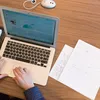Answer: (D) Text 2 expresses reservations about developments discussed in Text 1.
Soal 6
According to Text 2, space mining has positive potential but…
a. It will end up encouraging humanity’s reckless treatment of the environment.
b. Its effects should be thoughtfully considered before it becomes a reality.
c. Such potential may not include replenishing key resources that are disappearing on Earth.
d. Experts disagree about the commercial viability of the discoveries it could yield
e. It could create unanticipated technological innovations.
Answer: (B) Its effects should be thoughtfully considered before it becomes a reality
Text 1
In 1894, British psychologist C. Lloyd Morgan published what’s called Morgan’s canon, the principle that suggestions of humanlike mental processes behind an animal’s behavior should be rejected if a simpler explanation will do. Still, people seem to maintain certain expectations, especially when it comes to birds and mammals. “We somehow want to prove they are as ‘smart’ as people,” zoologist Sara Shettleworth says. We want a bird that masters a vexing problem to be employing humanstyle insight.
New Caledonian crows face the high end of these expectations, as possibly the second-best toolmakers on the planet. Their tools are hooked sticks or strips made from spikeedged leaves, and they use them in the wild to winkle grubs out of crevices. Researcher Russell Gray first saw the process on a cold morning in a mountain forest in New Caledonia, an island chain east of Australia. Over the course of days, he and crow researcher Gavin Hunt had gotten wild crows used to finding meat tidbits in holes in a log. Once the birds were checking the log reliably, the researchers placed a spiky tropical pandanus plant beside the log and hid behind a blind.
A crow arrived. It hopped onto the pandanus plant, grabbed the spiked edge of one of the long straplike leaves and began a series of ripping motions. Instead of just tearing away one long strip, the bird ripped and nipped in a sequence to create a slanting stair-step edge on a leaf segment with a narrow point and a wide base. The process took only seconds. Then the bird dipped the narrow end of its leaf strip into a hole in the log, fished up the meat with the leaf-edge spikes, swallowed its prize and flew off. “That was my ‘oh wow’ moment,” Gray says. After the crow had vanished, he picked up the tool the bird had left behind. “I had a go, and I couldn’t do it,” he recalls. Fishing the meat out was tricky. It turned out that Gray was moving the leaf shard too forcefully instead of gently stroking the spines against the treat. The crow’s deft physical manipulation was what inspired Gray and Auckland colleague Alex Taylor to test other wild crows to see if they employed the seemingly insightful stringpulling solutions that some ravens, kea parrots and other brainiac birds are known to employ. Three of four crows passed that test on the first try.
Text 2
For one month after they left the nest, I led my four young ravens at least once and sometimes several times a day on thirty-minute walks. During these walks, I wrote down everything in their environment they pecked at. In the first sessions, I tried to be teacher. I touched specific objects— sticks, moss, rocks—and nothing that I touched remained untouched by them. They came to investigate what I had investigated, leading me to assume that young birds are aided in learning to identify food from the parents’ example. They also, however, contacted almost everything else that lay directly in their own paths. They soon became more independent by taking their own routes near mine. Even while walking along on their own, they pulled at leaves, grass stems, flowers, bark, pine needles, seeds, cones, clods of earth, and other objects they encountered. I wrote all this down, converting it to numbers. After they were thoroughly familiar with the background objects in these woods and started to ignore them, I seeded the path we would later walk together with objects they had never before encountered. Some of these were conspicuous food items: raspberries, dead meal worm beetles, and cooked corn kernels. Others were conspicuous and inedible: pebbles, glass chips, red winterberries. Still others were such highly cryptic foods as encased caddisfly larvae and moth cocoons. The results were dramatic.





